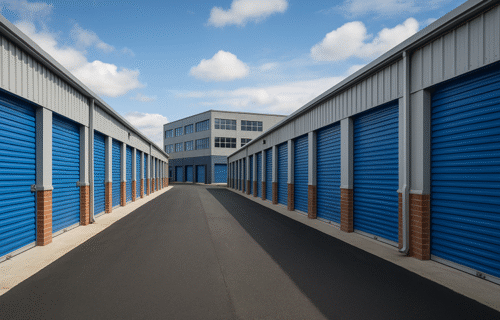Europe’s self-storage industry is expanding across the continent despite rising interest rates, construction costs, and economic uncertainty. Analysts say the sector’s stability reflects its growing role in urban living and small-business operations, as well as its resilience in downturns.
Over the past year, the number of self-storage facilities in Europe has continued to climb, reaching nearly ten thousand sites. The market remains dominated by the United Kingdom, France, Germany, and Spain, but developers are increasingly turning to Central and Eastern Europe, where public awareness is rising and competition is lower. Countries such as Poland, the Czech Republic, and Hungary are now attracting new investment and development interest.
Demand has held up even as consumers face tighter budgets. Many operators report steady rental activity, supported by people moving homes, downsizing, or using extra space for online retail and small-business storage. Although occupancy levels in some markets have softened slightly, the average income per unit of space has grown modestly, helped by more efficient management and technological upgrades.
Industry experts say the self-storage model has proven particularly resilient because it meets both personal and commercial needs. City residents continue to seek flexible solutions for seasonal goods and furniture, while entrepreneurs use storage units as low-cost extensions of their operations. This dual demand helps cushion the sector from broader economic swings.
Investment appetite also remains strong. Real estate investors view the sector as a stable long-term asset, supported by recurring income and relatively low volatility. While financing conditions have become more expensive, the long-term fundamentals of the business—limited supply in many markets and consistent occupancy—have helped sustain interest in new projects.
France has emerged as one of Europe’s fastest-growing markets, now home to more than a thousand self-storage centres. Developers are expanding rapidly in regional cities and suburban areas, where land availability and demand balance more easily. Similar growth patterns are being observed in the Benelux countries and parts of Central Europe, where new entrants are introducing modern, digitalised facilities.
Looking ahead, growth in the industry is expected to continue, though at a slower pace than in the boom years following the pandemic. Operators are focusing on improving energy efficiency and introducing contactless technology to reduce costs and appeal to environmentally conscious consumers. Hybrid models combining self-storage with light logistics or shared workspace are also gaining attention as companies explore new ways to use space.
Despite the uncertain economic backdrop, the European self-storage sector remains one of the property market’s most resilient niches. Its appeal lies in its practicality: a straightforward service that meets real everyday needs. Whether for families running out of room or small businesses seeking flexibility, the industry continues to find steady demand—and investors are taking notice.
